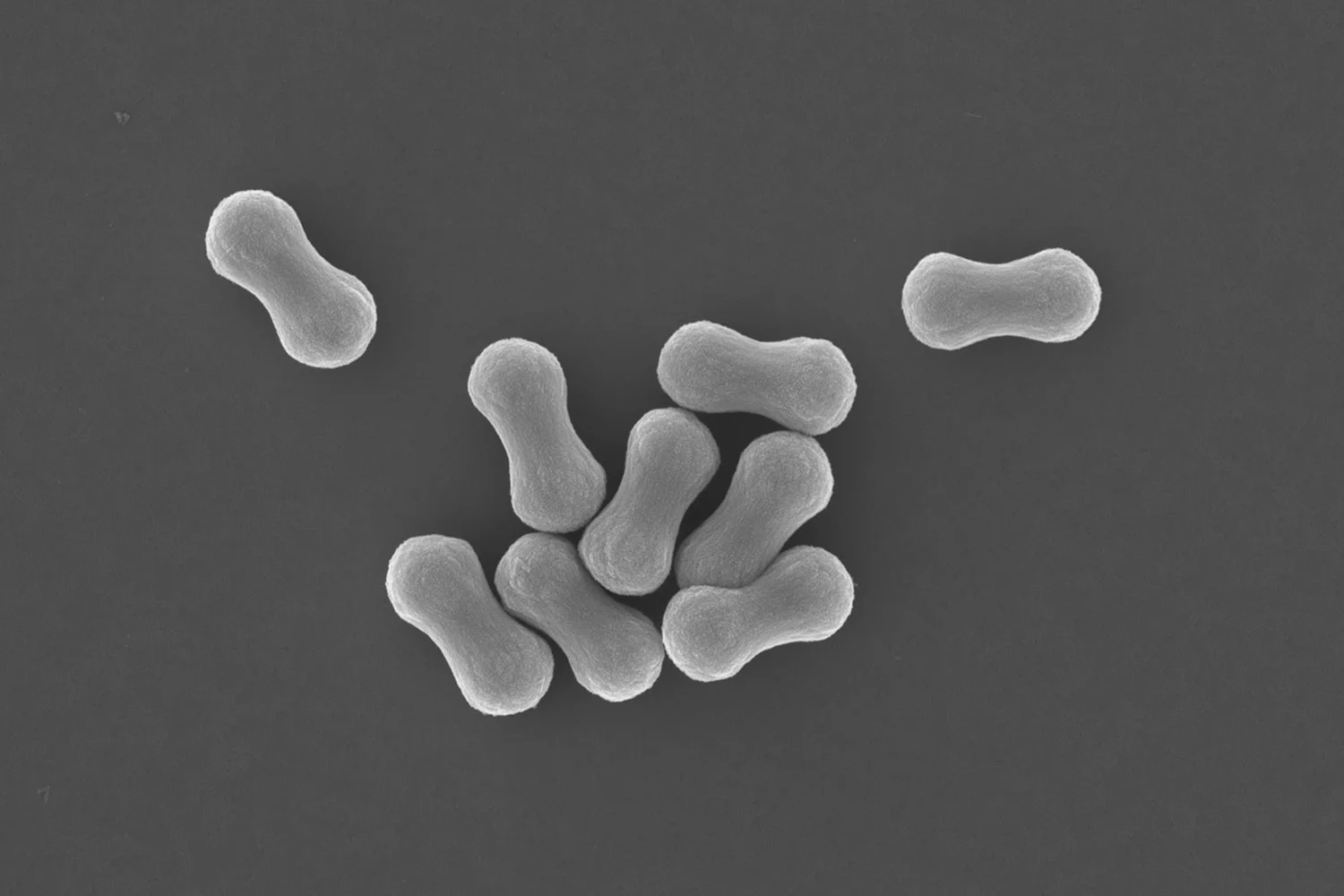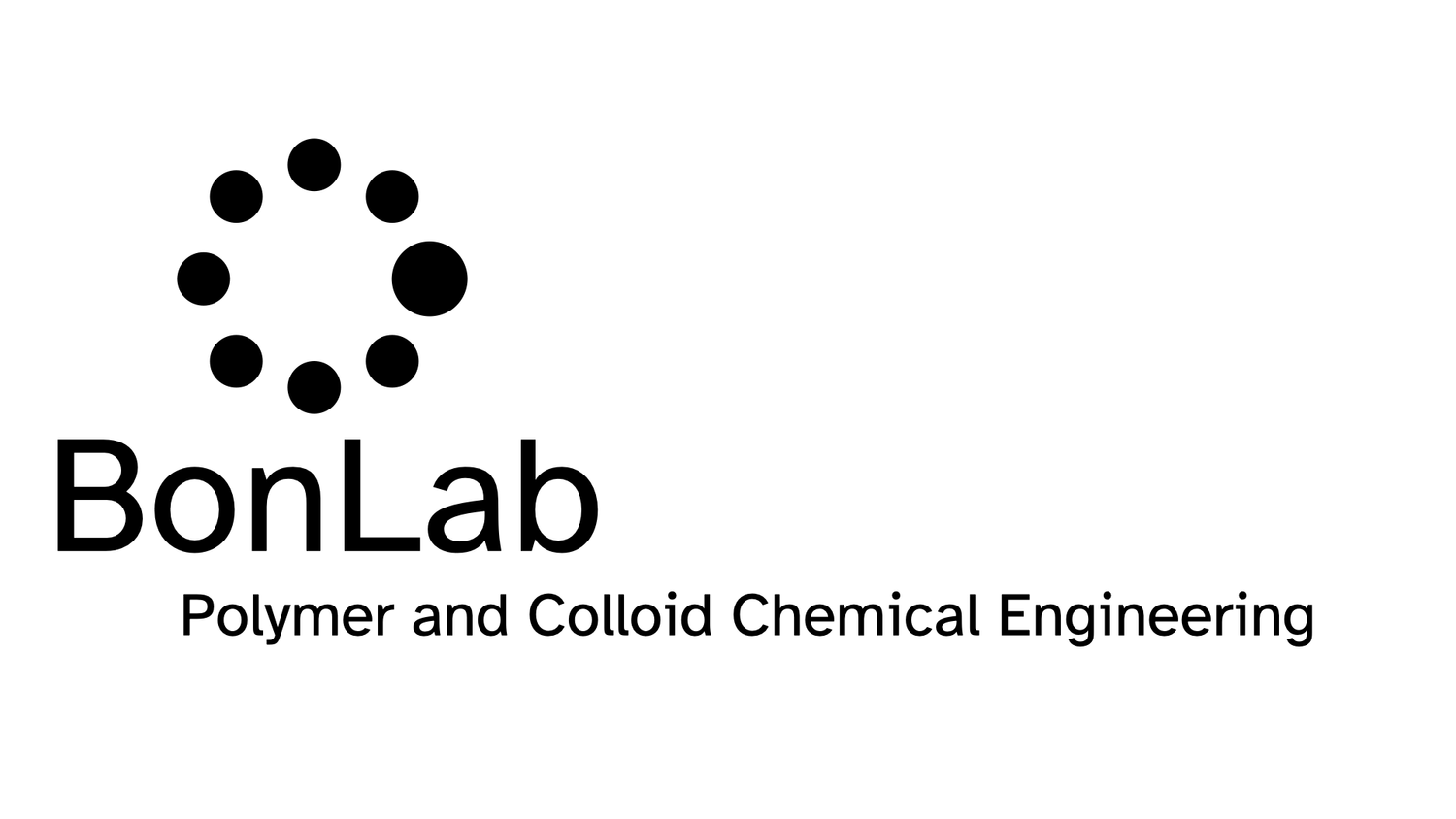
BONLAB BLOG
Thoughts
&
Scientific Fiction
A Mechanistic Insight into the Synthesis of Silica-Based “Matchstick” Colloids
In the field of colloid science the ability to fabricate particles with a defined shape, other than a sphere, has gained attention. The reason is that anisotropy in shape and/or chemical composition can lead to interesting physical properties when these particles are dispersed in a liquid, or when they form part of a product formulation. We report an insight into the synthesis of silica-based “matchstick”-shaped colloidal particles, which are of interest in the area of self-propulsion on small length scales. The generation of aqueous emulsion droplets dispersed in an n-pentanol-rich continuous phase and their use as reaction centers allows for the fabrication of siliceous microparticles that exhibit anisotropy in both particle morphology, that is, a “matchstick” shape, and chemistry, that is, a transition-metal oxide-enriched head. We provide a series of kinetic studies to gain a mechanistic understanding and unravel the particle formation and growth processes. Additionally, we demonstrate the ability to select the aspect ratio of the “matchstick” particle in a straightforward manner.
The paper is recently published in Langmuir. DOI:10.1021/acs.langmuir.5b02645
In the field of colloid science the ability to fabricate particles with a defined shape, other than a sphere, has gained attention. The reason is that anisotropy in shape and/or chemical composition can lead to interesting physical properties when these particles are dispersed in a liquid, or when they form part of a product formulation. We report an insight into the synthesis of silica-based “matchstick”-shaped colloidal particles, which are of interest in the area of self-propulsion on small length scales. The generation of aqueous emulsion droplets dispersed in an n-pentanol-rich continuous phase and their use as reaction centers allows for the fabrication of siliceous microparticles that exhibit anisotropy in both particle morphology, that is, a “matchstick” shape, and chemistry, that is, a transition-metal oxide-enriched head. We provide a series of kinetic studies to gain a mechanistic understanding and unravel the particle formation and growth processes. Additionally, we demonstrate the ability to select the aspect ratio of the “matchstick” particle in a straightforward manner.
The paper is recently published in Langmuir. DOI:10.1021/acs.langmuir.5b02645
Fabrication of calcium phosphate microcapsules using emulsion droplets stabilized with branched copolymers as templates
Calcium phosphate based hybrid materials are of great interest for bio-related science, for example our bones and teeth contain mineral components made from calcium phosphate. One class of materials of great interest are microcapsules, as these can store and release active ingredients. Calcium phosphate microcapsules have been made before via a number of synthetic pathways. Key drawbacks however are tedious and long (up to a month) fabrication methods. In our paper published recently in the Journal of Materials Chemistry B we report on a versatile and time-efficient method to fabricate calcium phosphate (CaP) microcapsules by utilizing oil-in-water emulsion droplets stabilized with synthetic branched copolymer (BCP) as templates. The BCP was designed to provide a suitable architecture and functionality to produce stable emulsion droplets, and to permit the mineralization of CaP at the surface of the oil droplet when incubated in a solution containing calcium and phosphate ions. The CaP shells of the microcapsules were established to be calcium deficient hydroxyapatite with incorporated chlorine and carbonate species. These capsule walls were made fluorescent by decoration with a fluorescein-bisphosphonate conjugate.
To read the paper: DOI: 10.1039/C5TB00893J
SEM micrographs illustrating the mineralization of CaP at the surface of oil droplets stabilized with BCP. (A) Incubation periods of 0 hours (scale bar = 37 µm), (B) 48 hours (scale bar = 16 µm), (C) 60 hours (scale bar = 7 µm), (D and E) 72 hours (scale bars = 23 µm and 7 µm, respectively), (F) surface morphology of CaP capsule (scale bar = 704 nm), (G) CaP capsules annealed at 600 oC (scale bar = 2 µm), (H) surface morphology of CaP capsule after annealing at 600 oC (scale bar = 648 nm), and (I and J) shell thickness of the CaP capsules before annealing (scale bars = 1 µm and 540 nm, respectively).
Calcium phosphate based hybrid materials are of great interest for bio-related science, for example our bones and teeth contain mineral components made from calcium phosphate. One class of materials of great interest are microcapsules, as these can store and release active ingredients. Calcium phosphate microcapsules have been made before via a number of synthetic pathways. Key drawbacks however are tedious and long (up to a month) fabrication methods. In our paper published recently in the Journal of Materials Chemistry B we report on a versatile and time-efficient method to fabricate calcium phosphate (CaP) microcapsules by utilizing oil-in-water emulsion droplets stabilized with synthetic branched copolymer (BCP) as templates. The BCP was designed to provide a suitable architecture and functionality to produce stable emulsion droplets, and to permit the mineralization of CaP at the surface of the oil droplet when incubated in a solution containing calcium and phosphate ions. The CaP shells of the microcapsules were established to be calcium deficient hydroxyapatite with incorporated chlorine and carbonate species. These capsule walls were made fluorescent by decoration with a fluorescein-bisphosphonate conjugate.
To read the paper: DOI: 10.1039/C5TB00893J
Nature poster prize for Brooke Longbottom
Congratulations to Brooke Longbottom, a 1st year PhD student in the BonLab, for winning a Nature poster prize at the 2015 International Polymer Colloids Group (IPCG) Conference in New Hampshire (USA) for his work on the fabrication of colloidal matchstick swimmers.






